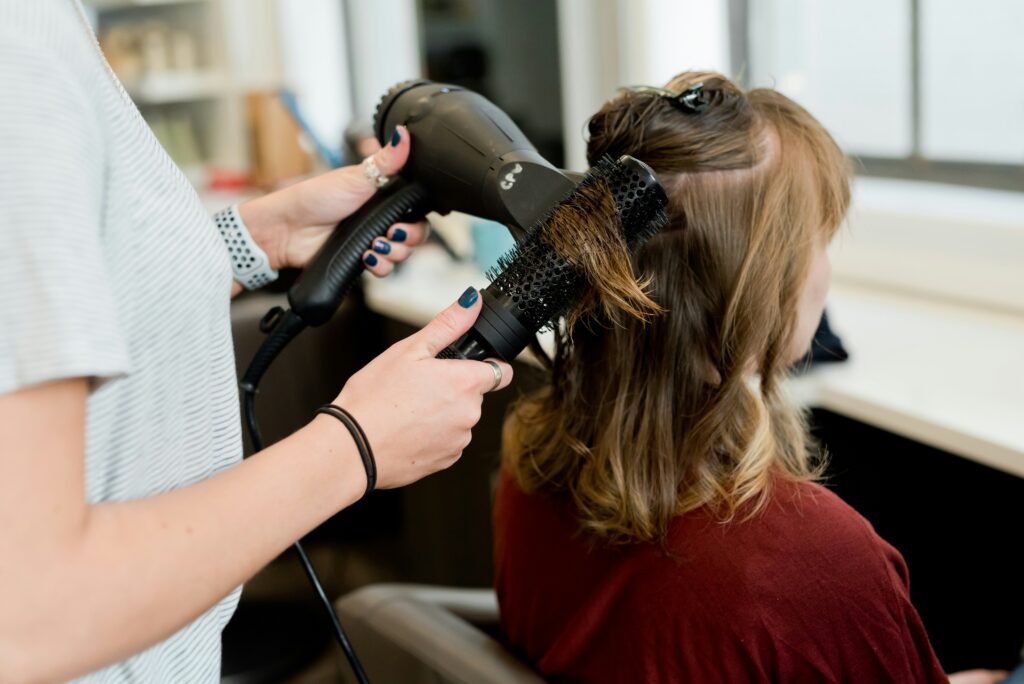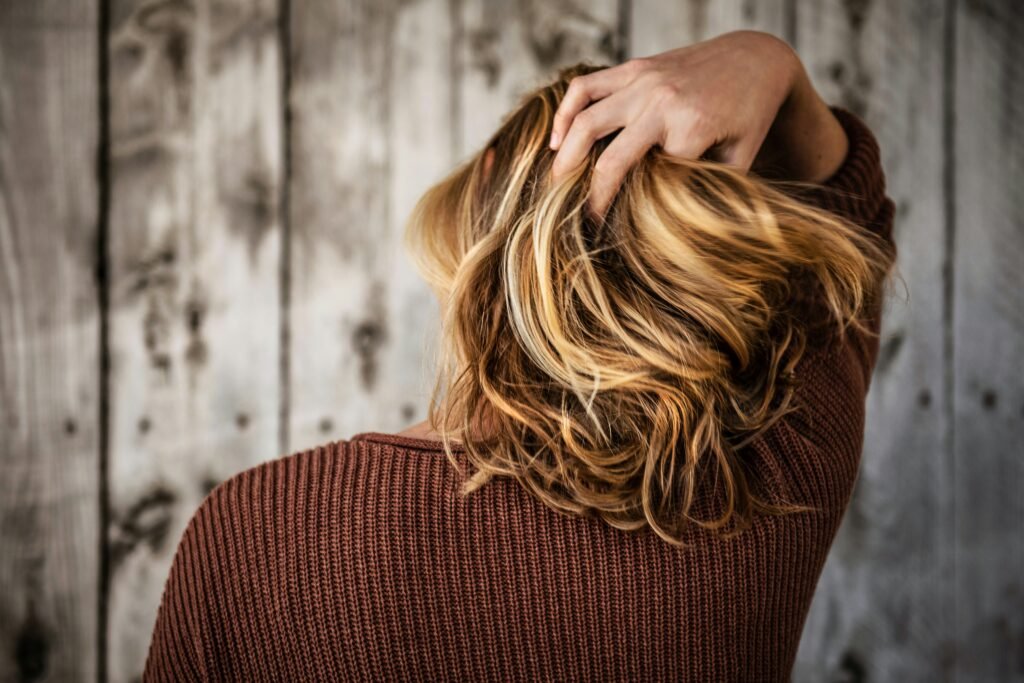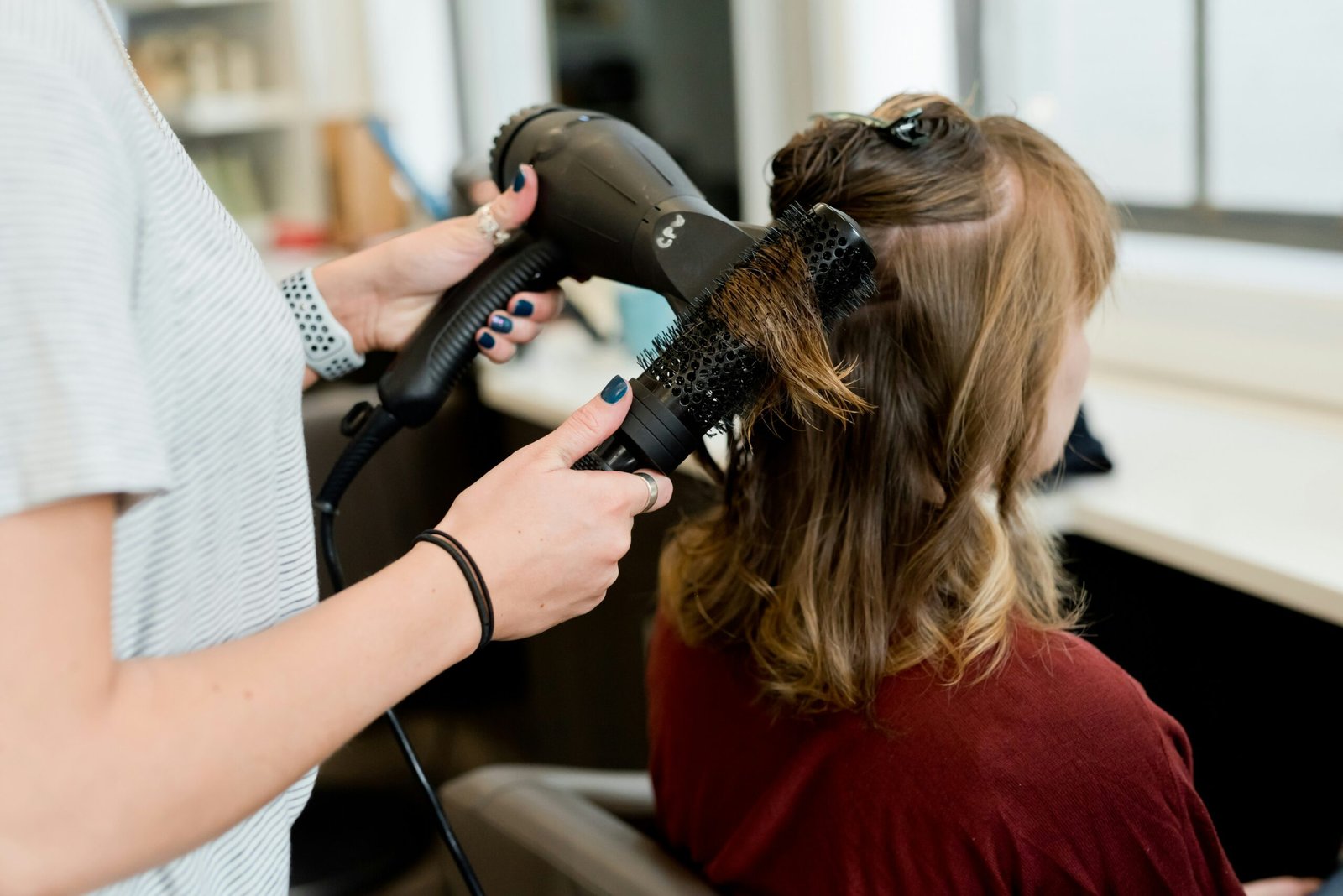Maintain the lively color and bouncy elasticity of your hair effortlessly with these daily hair care tips. Discover secrets for preserving your hair’s vibrant hue and ensuring it stays luxuriously soft and flexible. From protecting against fading to preventing breakage, these tried-and-true tips will help you achieve your hair goals while keeping it healthy and lustrous. Say goodbye to lackluster locks and hello to radiant hair that shines with vitality.

This image is property of images.unsplash.com.
Choosing the Right Hair Products
Use color-protecting shampoo and conditioner
When it comes to maintaining the vibrancy of your hair color, using a color-protecting shampoo and conditioner is essential. These products are specifically formulated to minimize color fading and help your hair color last longer. Look for shampoos and conditioners that are sulfate-free and contain ingredients like antioxidants and UV filters to protect your hair from environmental damage.
Look for products with UV protection
UV rays from the sun can be harmful to your hair, causing it to become dry, brittle, and fade in color. To protect your hair from UV damage, opt for hair products that have built-in UV protection. These products form a protective barrier on your hair and shield it from the harmful effects of the sun’s rays.
Avoid shampoos and conditioners with sulfates
Sulfates are harsh cleansing agents found in many shampoos and conditioners. They can strip away the natural oils from your hair, leaving it dry and prone to breakage. To maintain the elasticity and health of your hair, it’s best to avoid shampoos and conditioners that contain sulfates. Instead, opt for sulfate-free alternatives that are gentler on your hair and scalp.
Use a leave-in conditioner for added protection
A leave-in conditioner is a great addition to your hair care routine, especially if you’re looking to maintain the color and elasticity of your hair. Leave-in conditioners provide an extra layer of moisture and protection to your hair, reducing frizz and keeping it manageable throughout the day. Look for leave-in conditioners that are specifically formulated for color-treated hair for optimal results.
Consider using a deep conditioning treatment
Deep conditioning treatments are a luxurious treat for your hair and can work wonders in maintaining its color and elasticity. These treatments provide intense hydration and nourishment to your hair, helping to repair damage and restore its vitality. Incorporate a deep conditioning treatment into your hair care routine once or twice a month to keep your locks looking healthy and vibrant.
Protecting Hair from Heat
Limit the use of heat styling tools
While heat styling tools like blow dryers, flat irons, and curling wands can give you the desired hairstyle, excessive heat can damage your hair’s color and elasticity. To protect your hair, try to limit the use of heat styling tools and opt for heat-free styling options whenever possible.
Use heat protectant products
When heat styling is unavoidable, using a heat protectant product is crucial. These products create a barrier between your hair and the heat, reducing the damage caused by styling tools. Spray a heat protectant on your hair before using any heat styling tools to minimize the negative effects of heat on your hair’s color and elasticity.
Avoid high heat settings on styling tools
Using high heat settings on your styling tools may seem tempting for quick and efficient styling, but it can do more harm than good. High heat can cause your hair’s color to fade and make it more susceptible to breakage. Opt for lower heat settings to protect your hair and keep it looking healthy and vibrant.
Allow hair to air dry whenever possible
Air drying your hair is a gentle and heat-free alternative to blow drying. By allowing your hair to dry naturally, you minimize the exposure to heat and reduce the risk of color fading and damage to the hair’s elasticity. If you’re in a rush and need to speed up the drying process, try blotting your hair with a microfiber towel to remove excess moisture before air drying.
Use a diffuser attachment for blow drying
If you prefer blow drying your hair, using a diffuser attachment can help to distribute the heat evenly and minimize damage. The diffuser attachment disperses the airflow, reducing the intensity of the heat on your hair. This is especially beneficial for curly or wavy hair, as it helps to enhance natural texture and minimize frizz.

This image is property of images.unsplash.com.
Avoiding Overwashing and Overbrushing
Wash hair every other day or every few days
Overwashing your hair can strip away its natural oils, leaving it dry, dull, and prone to damage. To maintain the color and elasticity of your hair, aim to wash it every other day or every few days. This allows your scalp to produce the necessary oils to keep your hair hydrated and healthy.
Use dry shampoo in between washes
If you find that your hair tends to get oily between washes, using a dry shampoo can be a game-changer. Dry shampoo absorbs excess oil from your scalp, giving your hair a refreshed and clean appearance. It’s a great alternative to traditional washing and can help extend the time between washes while preserving the color and elasticity of your hair.
Avoid brushing wet hair
Wet hair is more susceptible to damage, as it is more fragile and prone to breakage. Avoid brushing your hair immediately after washing or when it is still damp. Instead, use a wide-toothed comb or your fingers to gently detangle your hair. Let it air dry or use a towel to blot out excess moisture before styling or brushing.
Use a wide-toothed comb or brush with flexible bristles
When it comes to brushing your hair, choose tools that are gentle on your hair strands. Opt for wide-toothed combs or brushes with flexible bristles to minimize breakage. These types of brushes and combs help to detangle your hair without causing unnecessary stress or damage to the hair’s color and elasticity.
Avoid excessive brushing, as it can lead to breakage
Brushing your hair is necessary to detangle and style it, but excessive brushing can actually lead to breakage and damage. Overbrushing pulls on the hair strands, causing them to weaken and break. Brush your hair gently and only when necessary to maintain the color and elasticity of your hair.
Protecting Hair from Environmental Damage
Cover hair with a hat or scarf in the sun
The sun’s rays can be harsh on your hair, causing it to become dry, brittle, and fade in color. To protect your hair from the damaging effects of the sun, cover it with a hat or scarf when you’re exposed to direct sunlight. This not only provides shade for your hair but also adds a stylish touch to your summer look.
Avoid swimming in chlorinated or salt water
Chlorinated or saltwater can be extremely drying and damaging to your hair’s color and elasticity. To protect your hair, try to avoid swimming in pools or the ocean without taking precautions. If swimming is unavoidable, consider wearing a swim cap to minimize the contact between your hair and the water.
Rinse hair with fresh water after swimming
After swimming in chlorinated or saltwater, it’s important to rinse your hair with fresh water as soon as possible. This helps to remove any lingering chemicals or salt from your hair, reducing the potential damage to its color and elasticity. Finish by applying a leave-in conditioner or using a deep conditioning treatment to replenish lost moisture.
Protect hair from extreme temperatures
Extreme temperatures, whether hot or cold, can take a toll on your hair’s color and elasticity. When exposed to extreme heat or freezing cold, your hair can become dry and more prone to breakage. To protect your hair, avoid prolonged exposure to extreme temperatures and consider wearing a hat or using protective hairstyles to shield your hair.
Avoid exposing hair to harsh winds
Harsh winds can tangle your hair and cause it to become dry and frizzy. To protect your hair from the damaging effects of strong winds, consider tying it up or wearing a protective style. You can also use hair products like serums or oils to help combat frizz and keep your hair looking polished even in windy conditions.

This image is property of images.unsplash.com.
Using Color-Enhancing Treatments
Apply color-enhancing hair masks or glosses
Color-enhancing hair masks or glosses can help revive and enhance your hair’s color. These treatments are designed to deposit temporary color pigments onto your hair, enhancing its vibrancy and maintaining the overall color integrity. Use these treatments once a week or as needed to keep your hair’s color looking fresh and vibrant.
Use purple shampoo for blonde or silver hair
If you have blonde or silver hair, using a purple shampoo can make a significant difference in maintaining your hair’s color. Purple shampoo helps neutralize yellow or brassy tones that can develop over time, keeping your blonde or silver hair looking cool and bright. Incorporate purple shampoo into your hair care routine once or twice a week for optimal results.
Apply a temporary color spray for special occasions
For special occasions or when you want to switch up your hair color temporarily, consider using a temporary color spray. These sprays come in various shades and allow you to experiment with different hair colors without the commitment or potential damage. Just make sure to thoroughly wash out the color spray after use to prevent any residual staining.
Opt for professional color treatments
If you’re considering a more permanent change in hair color, it’s best to opt for professional color treatments. Professional colorists have the expertise and knowledge to achieve your desired color while minimizing damage to your hair. They can recommend the best color formulations and techniques that will help maintain the color and elasticity of your hair.
Avoid over-processing hair with excessive treatments
While color treatments can be exciting, it’s important to avoid over-processing your hair with excessive treatments. Excessive chemical treatments can weaken your hair’s structure, leading to breakage and loss of elasticity. It’s crucial to give your hair sufficient time to recover between color treatments and to nourish it with deep conditioning treatments.
Minimizing Damage from Hair Accessories
Avoid using tight hair ties or elastic bands
Using tight hair ties or elastic bands can cause unnecessary stress and breakage to your hair. Opt for hair ties or bands that are gentle on your hair and don’t leave indentations or cause discomfort. Look for ones that are specifically designed to prevent snagging or pulling on your precious strands.
Choose hair accessories made of gentle materials
When it comes to hair accessories, choosing ones made of gentle materials can help minimize damage. Avoid accessories made of metal or plastic, as they can cause breakage and snag your hair. Instead, opt for hair accessories made of fabric, silk, or satin, which are softer and less likely to cause damage or breakage.
Avoid metal or plastic hair accessories that can cause breakage
Metal or plastic hair accessories, such as hair clips or barrettes, can snag or break your hair if used improperly. To protect your hair from unnecessary damage, choose hair accessories made of gentler materials like fabric or those with smooth edges. These types of accessories are less likely to get caught in your hair and cause breakage.
Use silk or satin pillowcases to reduce friction
Friction between your hair and your pillowcase can lead to breakage and damage to your hair’s color and elasticity. Swap out your cotton pillowcase for a silk or satin one to reduce friction while you sleep. Silk and satin pillowcases are smoother and gentler on your hair, allowing it to glide smoothly without causing any unnecessary damage.
Avoid hairstyles that pull on the hair too tightly
Hairstyles that pull on your hair too tightly, such as tight ponytails or braids, can cause breakage and damage to your hair. Avoid hairstyles that tug at your hairline or feel uncomfortable. Opt for looser and more relaxed hairstyles that allow your hair to move and breathe freely, minimizing the risk of damage to its color and elasticity.
Eating a Healthy Diet for Hair Health
Include foods rich in vitamins and minerals
A healthy diet plays a vital role in maintaining the overall health and vitality of your hair. Include foods that are rich in vitamins and minerals essential for hair health, such as fruits, vegetables, lean proteins, and whole grains. These foods provide the necessary nutrients to nourish your hair, promoting its color and elasticity from within.
Consume enough protein for hair strength
Protein is a crucial nutrient for maintaining the strength and elasticity of your hair. Include protein-rich foods in your diet, such as lean meats, fish, eggs, dairy products, legumes, and nuts. These foods help to repair and strengthen your hair strands, making them more resilient to damage and preserving their color vibrancy.
Stay hydrated for overall hair health
Proper hydration is essential for the health of your hair. Drinking an adequate amount of water helps to keep your hair hydrated from the inside out, promoting its resilience, strength, and color brilliance. Make it a habit to drink enough water throughout the day and incorporate hydrating foods into your diet, such as fruits and vegetables with high water content.
Avoid crash diets or extreme restrictions
Crash diets or extreme dietary restrictions can have a negative impact on your hair’s health, including its color and elasticity. These diets often lack the necessary nutrients for healthy hair growth and maintenance. Instead, focus on maintaining a balanced and varied diet that provides all the essential nutrients your hair needs to thrive.
Consider taking hair health supplements
If you find it challenging to incorporate all the necessary nutrients for hair health into your diet, you may consider taking hair health supplements. These supplements typically contain a combination of vitamins, minerals, and other ingredients that support hair growth, strength, and color. Consult with a healthcare professional or a registered dietitian before starting any new supplements to ensure they are safe and suitable for your individual needs.
Regular Trims for Hair Maintenance
Get regular trims every 6-8 weeks
Regular trims are crucial for maintaining the health and appearance of your hair. Aim to get a trim every 6-8 weeks to prevent split ends from traveling up the hair shaft and causing further damage. Trimming your hair regularly promotes healthier growth and helps to maintain its color and elasticity.
Trim split ends to prevent further damage
Split ends not only make your hair look frizzy and unhealthy but they can also lead to more severe damage if left unaddressed. To prevent further damage, trim split ends as soon as you notice them. This helps to keep the overall health of your hair intact and ensures that the color and elasticity of your hair strands remain unaffected.
Maintain the shape and health of your hairstyle
Regular trims are essential for maintaining the shape and health of your hairstyle. As your hair grows, it can lose its original shape and become uneven. By getting regular trims, you can maintain the integrity of your hairstyle and ensure that your hair looks its best.
Consult a professional hair stylist for advice
If you’re unsure about the best maintenance routine or the type of trims that would suit your hair, consult a professional hair stylist. They can assess your hair’s condition, provide personalized advice, and recommend the most appropriate trims and treatments to maintain the color and elasticity of your hair.
Avoid excessive trimming, as it can hinder growth
While regular trims are important, excessive trimming can actually hinder hair growth. It’s essential to strike a balance between maintaining the health of your hair and allowing it to grow. Avoid overly frequent trims or excessive trimming, as this can disrupt the natural hair growth cycle and prevent your hair from reaching its full potential.
Avoiding Overexposure to Chemicals
Limit the use of chemical treatments like relaxers or perms
Chemical treatments like relaxers or perms can drastically change your hair’s texture, but they can also be quite damaging. To maintain the color and elasticity of your hair, it’s best to limit the use of these chemical treatments. Consider alternative styling options that are less damaging, such as heat-free styles or protective hairstyles.
Avoid frequent hair dyeing
Frequent hair dyeing can lead to damage and color fading, compromising the overall health and vibrancy of your hair. If you’re considering dyeing your hair, opt for less frequent touch-ups and choose hair colors that are close to your natural shade to minimize the need for frequent color maintenance.
Choose ammonia-free hair color options
Ammonia is a harsh chemical often found in hair dyes that can cause damage and dryness to your hair. When choosing hair color options, opt for ammonia-free formulas. These formulas are gentler on your hair and help to maintain its color and elasticity, minimizing the risk of damage.
Consider natural or herbal hair care alternatives
If you’re looking to steer clear of harsh chemicals altogether, consider natural or herbal hair care alternatives. These products are typically free of sulfates, parabens, and other potentially harmful ingredients. They can help maintain the color and elasticity of your hair while providing nourishment from natural sources.
Follow instructions carefully when using at-home kits
If you prefer to dye your hair at home, make sure to carefully follow the instructions provided with the hair color kit. Improper use of at-home kits can lead to over-processing, resulting in damage to the hair’s color and elasticity. Take the time to read and understand the instructions to achieve the best results while minimizing potential damage.
Managing Stress for Healthy Hair
Practice stress-reduction techniques
Stress can negatively impact your hair’s health, including its color and elasticity. To maintain healthy hair, practice stress-reduction techniques such as meditation, deep breathing exercises, or engaging in activities you enjoy. Managing stress not only benefits your overall well-being but also promotes the health and vitality of your hair.
Get enough sleep for hair regeneration
Adequate sleep is crucial for the regeneration and repair of your hair. During sleep, your body undergoes processes that help to restore and rejuvenate your hair follicles. Aim for 7-9 hours of quality sleep each night to support healthy hair growth and maintain the color and elasticity of your hair.
Engage in regular exercise for overall health
Regular exercise promotes overall health, including the health of your hair. Physical activity increases blood flow to the scalp, delivering essential nutrients and oxygen to your hair follicles. Find an exercise routine that suits your preferences and make it a part of your daily routine to support the color and elasticity of your hair.
Avoid excessive pulling or tugging on hair
Habitual pulling or tugging on your hair can lead to breakage and weaken its elasticity. Be mindful of how you handle your hair, especially when styling or detangling. Use gentle techniques and avoid using excessive force or pressure to minimize the risk of damage to the hair’s color and elasticity.
Consider scalp massages to promote hair health
Scalp massages can be a relaxing and beneficial practice for maintaining healthy hair. Massaging your scalp helps to increase blood flow to the hair follicles, promoting hair growth and maintaining its color and elasticity. Use gentle circular motions with your fingertips to massage your scalp for a few minutes each day.
Taking care of your hair involves more than just using the right products and treatments. It also requires adopting healthy habits and practices to maintain its color and elasticity. By following these tips, you can keep your hair looking vibrant, healthy, and beautiful for years to come. Remember, a little care and attention can go a long way in preserving the integrity of your hair and enhancing its natural beauty.
